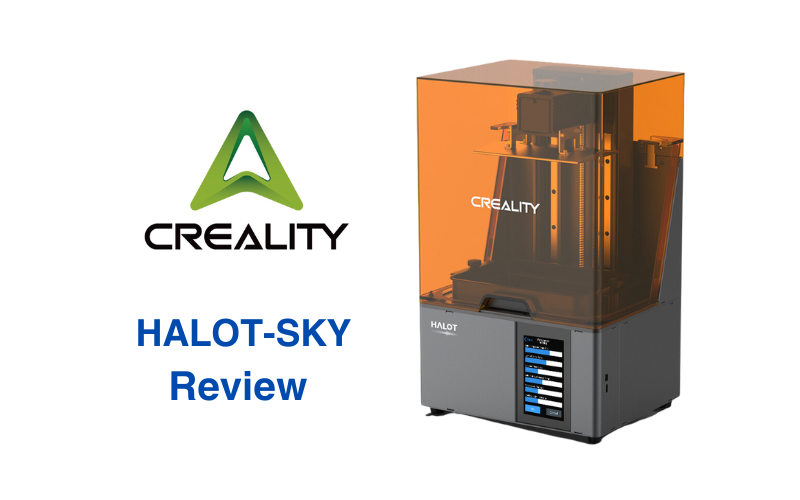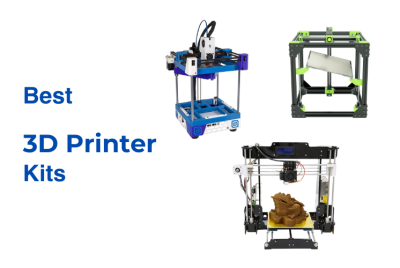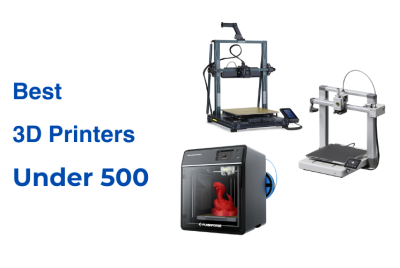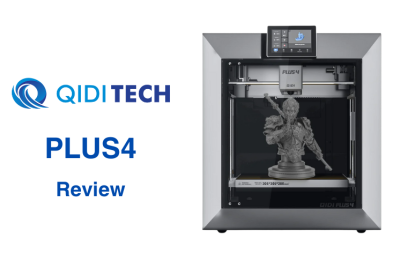Creality Halot Sky Review
Creality has been a key player in the 3D printing space, and their Halot series of resin printers represents a significant step forward in resin 3D printing technology. Creality developed the Halot line to bring detailed and high-quality resin printing to users, both beginners and professionals. These printers are built to deliver excellent results for applications such as creating complex miniatures, dental models, and jewelry prototypes.
The Halot series includes models like the Halot-One, Halot-Mage, and Halot-Sky, each designed with specific strengths. Creality introduced their self-developed integral light source technology in this series, which maintains even and consistent light distribution for more accurate prints. Each printer in the Halot series incorporates practical designs aimed at improving usability. In this review, we’ll take a closer look at the Halot Sky’s features, capabilities, and how it performs in different applications in industries that use resin 3D printing.
Design and Build Quality
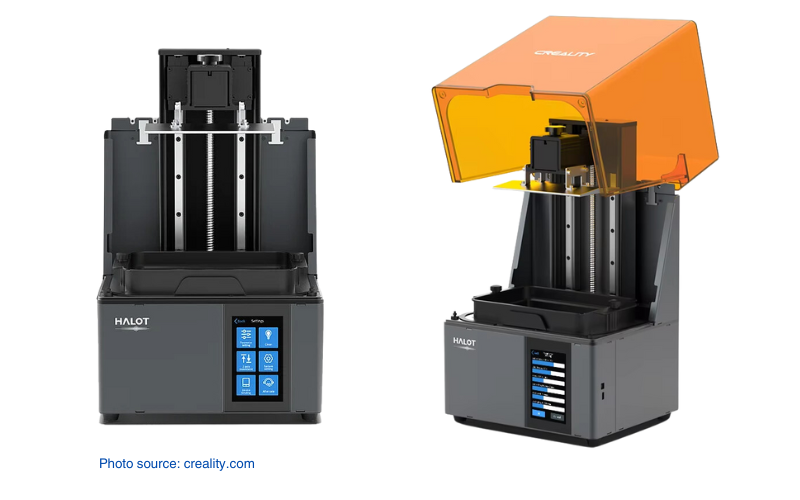
The Creality Halot-Sky feels like it was built to handle the demands of resin printing without unnecessary frills. Its frame measures 340 x 292 x 552 mm, giving it a compact but sturdy footprint. One of the first things you’ll notice is the translucent flip cover. It’s simple but effective—making it easier to keep an eye on prints while avoiding the mess that can come with traditional lids.
What sets the Halot-Sky apart is its reinforced Z-axis setup. With dual guide rails and a ball screw system, the printer handles movement with precision and consistency. The thicker column gives the whole setup extra stability, which really helps when tackling taller or heavier prints. It’s one of those features you might not think about until you’ve seen what a less stable printer can do to your prints.
At 16.5 kg, this isn’t a lightweight machine, but that’s not a bad thing. The extra weight helps keep it planted during operation, even for longer jobs. The 5-inch HD touchscreen is easy to access and straightforward to use, with a portrait layout that feels just a bit different from what you’d expect but works perfectly fine.
Key Features and Specifications
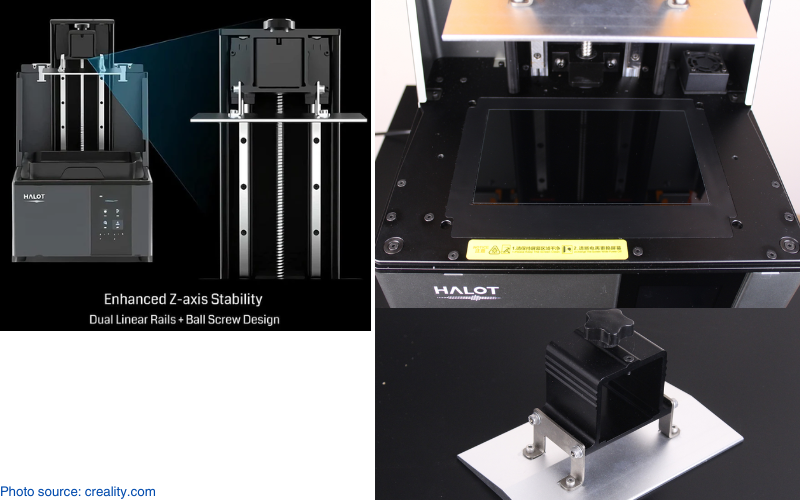
| Key Features | Specifications |
|---|---|
| 9.25” 6K Monochrome LCD Screen | Print Volume: 192 x 120 x 200 mm³ |
| Self-Developed Integral Light Source | XY Resolution: 50 µm (3840 x 2400 pixels) |
| Z-axis with Dual Linear Rails and Ball Screw System | Layer Thickness: 0.01-0.20 mm |
| Cortex-A53 Quad-Core Processor with AI Algorithms | Light Source: Self-developed Integral Light Source |
| Wi-Fi Connectivity for Remote Printing and Firmware Updates | Slicer Software: Compatible with standard slicing tools |
| Flip Cover with Translucent Material | Connectivity: USB | Wi-Fi |
| Storage: Built-in Memory | |
| System: ARM Cortex A53 Chip | |
| Operation: 5″ HD Color Touchscreen |
The Creality Halot-Sky brings several useful features to resin 3D printing. Its 6K monochrome screen has a resolution of 5760 x 3600, which is a good fit for detailed projects like miniatures or dental molds. The build volume of 192 x 120 x 200 mm strikes a balance between capacity and functionality.
Creality’s light source uses a reflective design to spread light evenly across the print area. This approach reduces the chances of uneven curing, helping prints come out as intended. The Z-axis is built with dual linear rails and a ball screw system, which stabilizes movement during printing and minimizes errors.
The 5-inch touchscreen is easy to operate, providing straightforward access to controls and settings. The flip cover allows users to check on the printing process easily while keeping resin management clean and simple. With built-in Wi-Fi, the printer connects to Creality’s app for monitoring progress or updating firmware without hassle.
Comparisons
Creality Halot-Sky vs. Elegoo Saturn
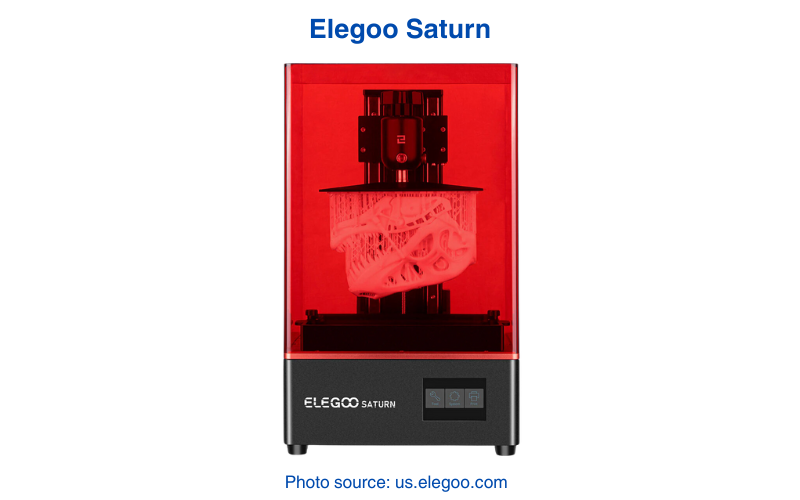
The Halot-Sky and Elegoo Saturn are mid-range resin printers with solid reputations, but their features differ in key ways.
- Build Volume: The Halot-Sky has a build volume of 192 x 120 x 200 mm, while the Saturn extends its Z-axis height to 245 mm, making it better suited for taller prints. Both printers provide sufficient capacity for most medium-scale projects.
- Light Source Technology: The Halot-Sky uses Creality’s integral light source with a reflective design that ensures consistent light distribution across the print bed. The Saturn employs an LED matrix system, which is widely used in resin printers and delivers reliable results.
- Z-Axis Structure: The Halot-Sky is equipped with dual linear guide rails and a ball screw system, providing stable operation for tall or complex prints. The Saturn features a single rail design, which is effective but may not offer the same level of stability for heavier builds.
- Connectivity: The Halot-Sky includes Wi-Fi for remote operation and firmware updates, while the Saturn relies on USB-only file transfers.
Creality Halot-Sky vs. Anycubic Photon Mono X
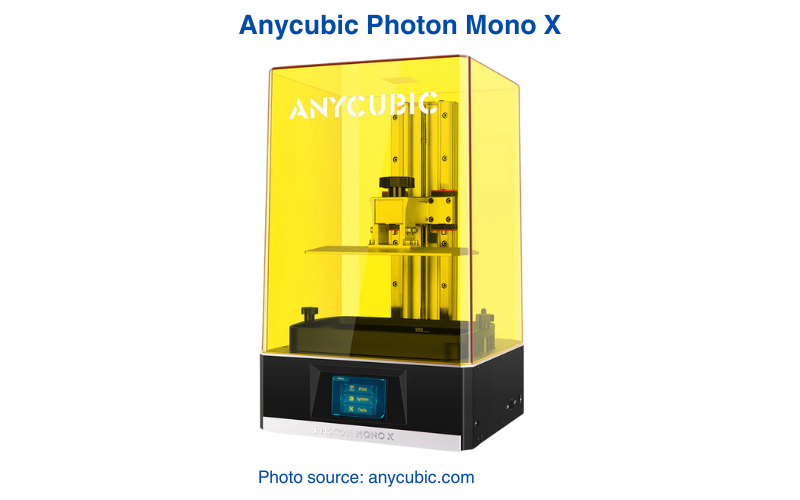
The Photon Mono X and Halot-Sky compete in the same category, with advanced features for resin 3D printing makers.
- Build Volume: The Photon Mono X’s build volume of 192 x 120 x 245 mm provides more height for larger prints. That’s compared to the Halot-Sky’s 192 x 120 x 200 mm. Both printers excel at handling medium-sized models.
- Light Source Technology: Creality’s integral light source uses a reflective system to distribute light evenly. On the other hand, the Photon Mono X relies on a UV matrix LED array. Both systems are effective at curing resin but take slightly different approaches to achieve uniformity.
- Connectivity: The Halot-Sky’s built-in Wi-Fi allows for remote monitoring and firmware updates. While the Photon Mono X uses USB for file transfers.
- Ease of Use: The Halot-Sky’s flip cover design simplifies resin management, making it easier to handle. The Photon Mono X uses a lift-off cover, which can be less convenient for frequent adjustments.
Real World Applications
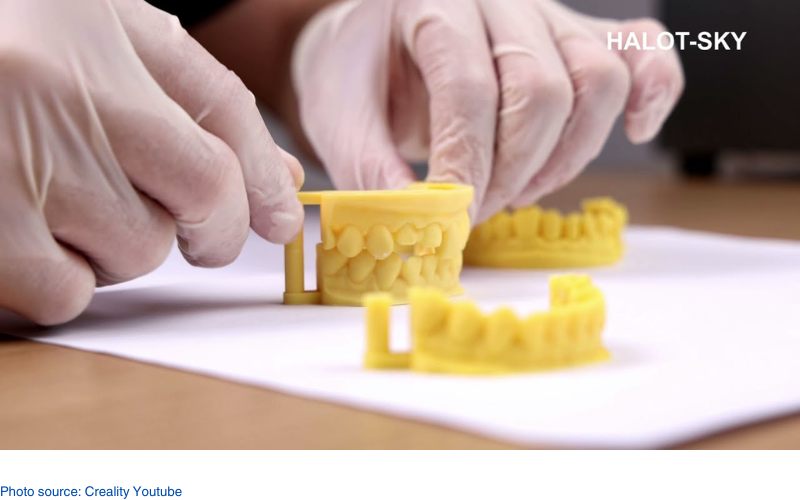
The Creality Halot-Sky is a resin 3D printer that serves multiple industries and creative fields. Here are specific examples of how it is used in practice:
- Dental Care: Dental professionals rely on the Halot-Sky to produce accurate dental models and surgical guides. Its high-resolution printing helps create dental appliances that fit properly, improving patient outcomes. For instance, the printer is particularly effective in fabricating detailed models for planning procedures and custom implants.
- Architectural Models: Architects use the Halot-Sky to create scale models that clearly represent their designs. The printer’s build volume and resolution enable it to produce detailed structures, helping architects communicate their concepts effectively during client presentations.
- Toys and Miniatures: Designers and creators in the toy and collectibles industry use the Halot-Sky for crafting figurines and miniatures. Its capability to handle detailed geometries makes it ideal for producing high-quality prototypes and collectibles. For example, anime figures with intricate patterns have been successfully printed, demonstrating the printer’s ability to meet the demands of this niche.
- Education and Prototyping: In educational settings, the Halot-Sky introduces students to the practical side of 3D printing. Its straightforward interface and consistent performance make it suitable for classrooms, where students can create prototypes and explore the design-to-production process. This hands-on approach helps prepare students for careers in design and engineering.
Conclusion
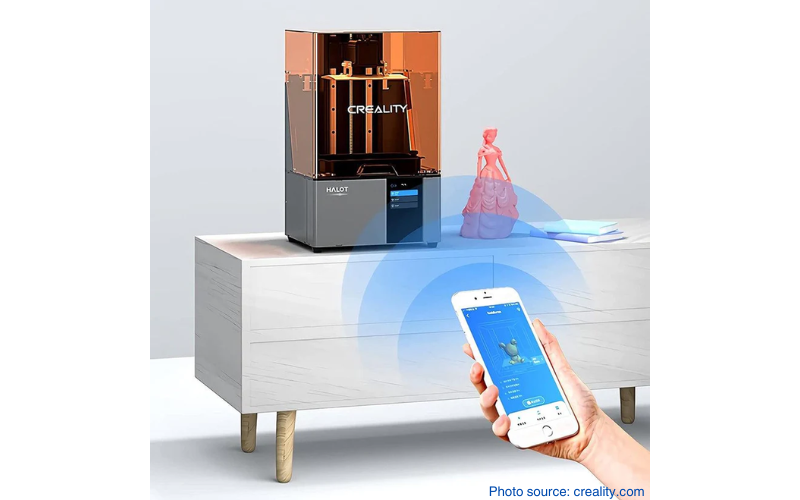
The Creality Halot-Sky showcases what a well-thought-out resin 3D printer can achieve. With its 9.25” 6K monochrome screen, this printer delivers sharp results that meet the needs of professionals and creators working on dental models, jewelry prototypes, architectural designs, and miniatures. Its build volume of 192 x 120 x 200 mm provides ample space for medium-sized projects, making it a versatile option for various applications.
One of its standout features is the self-developed integral light source, which distributes light evenly across the print bed, helping to produce consistent and high-quality prints. The reinforced Z-axis, with dual linear rails and a ball screw system, ensures stability during printing, reducing common errors like shifting layers. The Cortex-A53 chip enables fast data processing, which improves the overall efficiency when handling complex models.
The addition of Wi-Fi connectivity brings convenience to the workflow, letting users monitor progress and perform firmware updates remotely. The flip cover is another practical feature, simplifying resin management and minimizing mess during operation. Together, these features reflect Creality’s commitment to creating a resin 3D printer that combines functionality with advanced technology.

